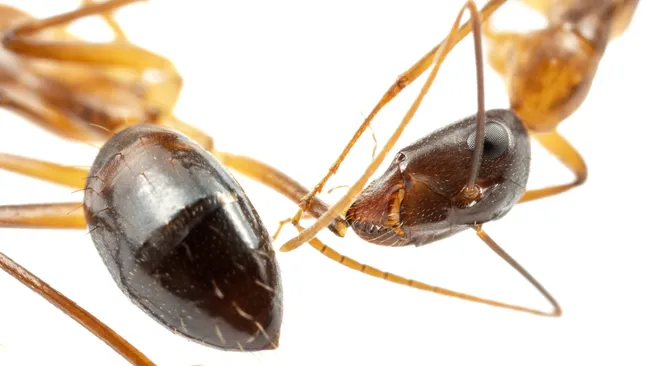Scientists have made a fascinating discovery about Florida carpenter ants (Camponotus floridanus): they perform life-saving surgery on their fellow colony members, marking only the second known case of such behavior in the animal kingdom, alongside humans.
Published in the journal Current Biology on Tuesday (July 2), the research reveals that these ants can identify and treat limb wounds on their nestmates through a process of either cleaning or amputation.
Lead author Erik Frank, a behavioral ecologist at the University of Würzburg in Germany, explained the significance: “When we talk about amputation behavior, this is literally the only known instance where one member of a species systematically and skillfully amputates another.”
In 2023, Frank’s team discovered that another ant species in Africa, Megaponera analis, uses an antimicrobial substance from glandular secretions to treat infected wounds. In contrast, Florida carpenter ants lack similar glands, prompting the researchers to investigate how they manage injuries within their colony.
Their study focused on two types of leg wounds: femur lacerations (thigh) and tibia injuries. Experimental observations revealed that when faced with femur wounds, the ants first cleaned the area with their mouths before performing amputations by biting repeatedly. In contrast, tibia wounds were treated solely through cleaning.
These surgical interventions led to significant improvements in the survival rates of the injured ants. Survival rates for femur injuries increased from less than 40% to between 90% and 95% post-amputation, while tibia injuries saw survival rates rise from 15% to 75% following cleaning alone.
The researchers suggest that femur amputations are prioritized due to the critical role of the femur’s muscle tissues in blood circulation. Damage to these muscles slows blood flow, potentially preventing infected blood from spreading quickly throughout the ant’s body, thus allowing enough time for amputation to be effective.
Conversely, tibia injuries, which involve less muscle tissue, allow infections to spread more rapidly. Amputation in these cases would take too long for the ants to halt bacterial spread effectively, hence they focus on cleaning the wound instead.
Frank highlighted the ants’ ability to diagnose and treat wounds over extended periods without evidence of learning, suggesting an innate medical behavior comparable in complexity to human medical systems.
Moving forward, the researchers plan to expand their investigation to other ant species lacking specialized antimicrobial glands, exploring whether similar surgical capabilities exist across different ant species.
